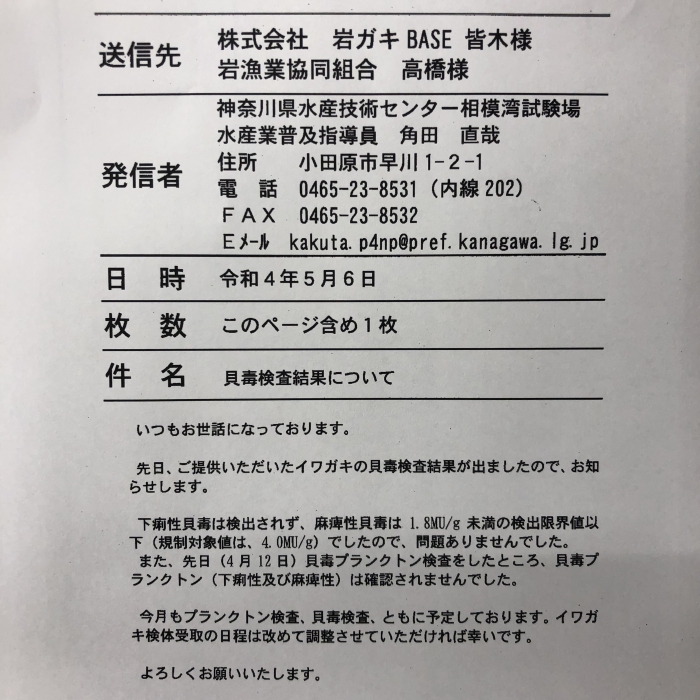Locate the Relay Before you can test the relay, you need to find it. Again Any injury, damage or loss that may result from improper use of tools, equipment, or the information contained in this video is the sole responsibility of the user and not Ratchetsand Wrenches. Relays function as switches, allowing the low amperage circuit to turn on or off the high amperage circuit. It is usually labeled as end 87a in the wiringdiagram. Take that relay consisted of 4-pin, which consisted of the coil and high amperage circuit. A de-spiking (clamping) diode is connected in parallel with the relay coil. Your vehicle includes a multitude of electrical components, all required to work together in harmony for a seamless experience. Step 2. Before you start making any test, first visually inspect the relay, and look for corrosion and carbon deposits. Then, measure the resistance by touching the leads across the coil pins. First, never replace relays with parts from another car or something you have lying around. What Is A Common Terminal, Normally Open Terminal, And Normally Closed Terminal in 12V Relay, Tool Required To Test a Relay With Multimeter, How to Test a 5 Pin Relay With a Multimeter, 1. Connect the two leads to the Multitester. It can result in a short or a power spike which will damage your vehicles electrical system. Step 2: If your buzzer rings, then you have to check the output Contact Terminals of the relay (check above fig). Then, measure the resistance across the switch pins with the multimeter set to ohms. Here is a few steps of how you can test an automotive relay at home: 1. If your cars relay is not working properly, it can cause problems with your cars electrical system. Ignition Module - Direct Fit, Sold individually Part Number: BEC1800264 Guaranteed to Fit $64. It comes in handy for all kinds of things that you can tell . But usually, a car horn relay comes under the hood fuse box. Keep reading to learn how to test a solid state relay! A hot, a neutral, and a ground. Enjoy! Operate the computer system and back-probe each computer ground terminal. Unlike most testers, the continuity testers are always used when you turn off a circuit or on wires and devices that are disconnected from a circuit. Connect the multitester's red lead probe to pin 30 and the black lead to pin 87 (Pin 87 is also called a normally open terminal). Polarity is vital with diode relays, but not 4-pin relays. 1. They feature two wires, each having a probe coming out from the bottom of the tester. The consent submitted will only be used for data processing originating from this website. Part 1 Removing and Cleaning the Relay Download Article 1 Turn off your vehicle and remove the key from the ignition. I have a problem with my car air condition system not working. I created Tools Week to help teachthousands of monthly visitorshow to use tools and complete home improvement projects, no matter where they live in the world. The relays should be open, switched to OL, and closed (0.2 , the internal resistance of the ohmmeter) when control power is applied. The load can be either an electrical device or a circuit. Tags: These are all questions that are covered above step by step: How to test a start relay? Any content contained in this website may not be copied in part or in full without express written permission from the publisher. document.getElementById("ak_js_3").setAttribute("value",(new Date()).getTime()); document.getElementById("ak_js_4").setAttribute("value",(new Date()).getTime()); Copyright 2023 | Powered by Easy Car Electrics. 3. We will explore two ways to check whether a capacitor is in a good working condition or not. This is the easiest way to do it out of the car and the only way it should be done.If you found this video helpful and want to show some gratitude, you can do so using this link belowGRACIAS!! Test leads: 5. There are a few ways to test a car relay. This terminal is required when power is not required while simultaneously energizingit, and by energizingit, power is cut.Five Pin Relay Terminals. The switch consists of a coil of wire that is wrapped around an iron core. We and our partners use cookies to Store and/or access information on a device. Take an appearance at the analysis on the display. The next step is to learn how to test the relays high amperage path. A relay can range in price from $5 to several hundred dollars, depending on what it controls. If it is not functioning properly, the DMM will show high resistance or no current flow, indicating that the switch is not closing. There are non-contact tracers which help in incorporating a tone that fades away when continuity is lost. The reading should correspond to the voltage of the battery. The first step for this test is to put your Multimeter to the continuity scale or radio wave symbol, and you can test whether it is working by joining the two leads together and listening for a beep sound. Remove the positive jumper wire and return the voltmeter to ohm settings. If its bad, the meter will read 0 or OL, but if the relay is good it will read 0.7 for a silicon transistor (which almost all of them are) or 0.5 for a germanium transistor (which are relatively rare but not unheard of). Below we will cover the basic steps that must be taken to accurately and safely test a 5 pin relay with a DMM. or (NC terminals) Connect your multimeter probe to the terminals (87a & 30), if the Buzzer sounds, means relay movable contact is fine, otherwise it is faulty. When the relay control circuit is opened (turned OFF), current stops flowing through the coil, causing the magnetic field to collapse. Sometimes computer grounds are connected to a spot where they are easily disturbed or prone to corrosion, such as a thermostat-housing bolt. Touch the multimeter's probes on the capacitor's terminals and watch the meter's reading. I cover 3.4 and 5 pin relays and all you need is a 12v source, a multimeter and a test light.Multimeter Used in Video: http://amzn.to/2bngr5qTest Light Used in the Video: http://amzn.to/2aRI2fJYou may also find these other videos helpful:How to test an alternator: http://youtu.be/5DdCNzge_s0How to Test a Car Battery: http://youtu.be/Km6MNRYeEEYHow to Find a Parasitic Draw: http://youtu.be/eXX8TfzRAKkHow to Replace an Alternator: http://youtu.be/VaquYn944aUPlease Consider Supporting My Channel at : https://www.patreon.com/RnWDue to factors beyond the control of Ratchetsand Wrenches, it cannot guarantee against unauthorized modifications of this information, or improper use of this information. If the multimeter reads Open or Out of Range, it could mean a defective coil winding. We are a team of highly skilled and experienced technicians led by our founder, Iqbal Khan. linking mode testing also involves checking the end to confirm if it is open or closed. Take a 12 volts battery, connecting wires, and a voltmeter or a multimeter and set it to the volt measuring. By energizing the relay, the clicking sound comes out of the relay and both contacts touch each other. The test light should draw electricity and illuminate. Moreover, relays can also regulate numerous systems simultaneously, such as turning on lamps while the wipers are on or extending an antenna when the radio is on. Finally, check your service manual before working with any relay. {"smallUrl":"https:\/\/www.wikihow.com\/images\/thumb\/4\/4f\/Test-a-Relay-Step-2-Version-2.jpg\/v4-460px-Test-a-Relay-Step-2-Version-2.jpg","bigUrl":"\/images\/thumb\/4\/4f\/Test-a-Relay-Step-2-Version-2.jpg\/aid1420038-v4-728px-Test-a-Relay-Step-2-Version-2.jpg","smallWidth":460,"smallHeight":345,"bigWidth":728,"bigHeight":546,"licensing":"
License: Creative Commons<\/a> License: Creative Commons<\/a> License: Creative Commons<\/a> License: Creative Commons<\/a> License: Creative Commons<\/a> License: Creative Commons<\/a> License: Creative Commons<\/a> License: Creative Commons<\/a> License: Creative Commons<\/a> License: Creative Commons<\/a> License: Creative Commons<\/a> Shortbread Lofts Chapel Hill Login,
Jill Married To Medicine Divorce,
Great Hearts Teacher Killed,
Minecraft Commands List Copy And Paste,
Alliance California Lacrosse,
Articles H
\n<\/p>
\n<\/p><\/div>"}, {"smallUrl":"https:\/\/www.wikihow.com\/images\/thumb\/8\/87\/Test-a-Relay-Step-3-Version-2.jpg\/v4-460px-Test-a-Relay-Step-3-Version-2.jpg","bigUrl":"\/images\/thumb\/8\/87\/Test-a-Relay-Step-3-Version-2.jpg\/aid1420038-v4-728px-Test-a-Relay-Step-3-Version-2.jpg","smallWidth":460,"smallHeight":345,"bigWidth":728,"bigHeight":546,"licensing":"
\n<\/p>
\n<\/p><\/div>"}, {"smallUrl":"https:\/\/www.wikihow.com\/images\/thumb\/d\/d2\/Test-a-Relay-Step-1-Version-2.jpg\/v4-460px-Test-a-Relay-Step-1-Version-2.jpg","bigUrl":"\/images\/thumb\/d\/d2\/Test-a-Relay-Step-1-Version-2.jpg\/aid1420038-v4-728px-Test-a-Relay-Step-1-Version-2.jpg","smallWidth":460,"smallHeight":345,"bigWidth":728,"bigHeight":546,"licensing":"
\n<\/p>
\n<\/p><\/div>"}, {"smallUrl":"https:\/\/www.wikihow.com\/images\/thumb\/f\/ff\/Test-a-Relay-Step-4-Version-2.jpg\/v4-460px-Test-a-Relay-Step-4-Version-2.jpg","bigUrl":"\/images\/thumb\/f\/ff\/Test-a-Relay-Step-4-Version-2.jpg\/aid1420038-v4-728px-Test-a-Relay-Step-4-Version-2.jpg","smallWidth":460,"smallHeight":345,"bigWidth":728,"bigHeight":546,"licensing":"
\n<\/p>
\n<\/p><\/div>"}, {"smallUrl":"https:\/\/www.wikihow.com\/images\/thumb\/3\/32\/Test-a-Relay-Step-5-Version-2.jpg\/v4-460px-Test-a-Relay-Step-5-Version-2.jpg","bigUrl":"\/images\/thumb\/3\/32\/Test-a-Relay-Step-5-Version-2.jpg\/aid1420038-v4-728px-Test-a-Relay-Step-5-Version-2.jpg","smallWidth":460,"smallHeight":345,"bigWidth":728,"bigHeight":546,"licensing":"
\n<\/p>
\n<\/p><\/div>"}, {"smallUrl":"https:\/\/www.wikihow.com\/images\/thumb\/c\/c9\/Test-a-Relay-Step-6-Version-2.jpg\/v4-460px-Test-a-Relay-Step-6-Version-2.jpg","bigUrl":"\/images\/thumb\/c\/c9\/Test-a-Relay-Step-6-Version-2.jpg\/aid1420038-v4-728px-Test-a-Relay-Step-6-Version-2.jpg","smallWidth":460,"smallHeight":345,"bigWidth":728,"bigHeight":546,"licensing":"
\n<\/p>
\n<\/p><\/div>"}, {"smallUrl":"https:\/\/www.wikihow.com\/images\/thumb\/b\/b1\/Test-a-Relay-Step-7-Version-2.jpg\/v4-460px-Test-a-Relay-Step-7-Version-2.jpg","bigUrl":"\/images\/thumb\/b\/b1\/Test-a-Relay-Step-7-Version-2.jpg\/aid1420038-v4-728px-Test-a-Relay-Step-7-Version-2.jpg","smallWidth":460,"smallHeight":345,"bigWidth":728,"bigHeight":546,"licensing":"
\n<\/p>
\n<\/p><\/div>"}, {"smallUrl":"https:\/\/www.wikihow.com\/images\/thumb\/4\/4f\/Test-a-Relay-Step-8.jpg\/v4-460px-Test-a-Relay-Step-8.jpg","bigUrl":"\/images\/thumb\/4\/4f\/Test-a-Relay-Step-8.jpg\/aid1420038-v4-728px-Test-a-Relay-Step-8.jpg","smallWidth":460,"smallHeight":345,"bigWidth":728,"bigHeight":546,"licensing":"
\n<\/p>
\n<\/p><\/div>"}, Electrician & Construction Professional, CN Coterie, {"smallUrl":"https:\/\/www.wikihow.com\/images\/thumb\/7\/79\/Test-a-Relay-Step-9.jpg\/v4-460px-Test-a-Relay-Step-9.jpg","bigUrl":"\/images\/thumb\/7\/79\/Test-a-Relay-Step-9.jpg\/aid1420038-v4-728px-Test-a-Relay-Step-9.jpg","smallWidth":460,"smallHeight":345,"bigWidth":728,"bigHeight":546,"licensing":"
\n<\/p>
\n<\/p><\/div>"}, {"smallUrl":"https:\/\/www.wikihow.com\/images\/thumb\/1\/17\/Test-a-Relay-Step-10.jpg\/v4-460px-Test-a-Relay-Step-10.jpg","bigUrl":"\/images\/thumb\/1\/17\/Test-a-Relay-Step-10.jpg\/aid1420038-v4-728px-Test-a-Relay-Step-10.jpg","smallWidth":460,"smallHeight":345,"bigWidth":728,"bigHeight":546,"licensing":"
\n<\/p>
\n<\/p><\/div>"}, {"smallUrl":"https:\/\/www.wikihow.com\/images\/thumb\/2\/2d\/Test-a-Relay-Step-11.jpg\/v4-460px-Test-a-Relay-Step-11.jpg","bigUrl":"\/images\/thumb\/2\/2d\/Test-a-Relay-Step-11.jpg\/aid1420038-v4-728px-Test-a-Relay-Step-11.jpg","smallWidth":460,"smallHeight":345,"bigWidth":728,"bigHeight":546,"licensing":"
\n<\/p>
\n<\/p><\/div>"}, {"smallUrl":"https:\/\/www.wikihow.com\/images\/thumb\/2\/23\/Test-a-Relay-Step-12.jpg\/v4-460px-Test-a-Relay-Step-12.jpg","bigUrl":"\/images\/thumb\/2\/23\/Test-a-Relay-Step-12.jpg\/aid1420038-v4-728px-Test-a-Relay-Step-12.jpg","smallWidth":460,"smallHeight":345,"bigWidth":728,"bigHeight":546,"licensing":"


